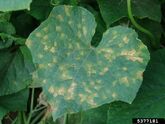~L
| Tarragon | |
|---|---|
| Russian tarragon | |
 |
|
| Leaves and flower buds of a russian tarragon plant | |
| Scientific Classification | |
| Genus: | Artemisia |
| Species: | Artemisia dracunculus |
| Subspecies: | Artemisia dracunculus var. inodora |
| Synonyms | |
| False tarragon Artemisia dracunculoides |
|
| Plant Data | |
|---|---|
| Min germination temp: | 15°C (59°F) |
| Max germination temp: | 20°C (68°F) |
| Germination time: | 7 days |
| Mature height: | 100cm (3ft) |
| Mature spread: | 30cm (1ft) |
| Ideal pH range: | 6.6 - 7.5 |
| Growing plant spacing: | 40cm (15in) |
| References: | [1][2][3] |
Russian tarragon (Artemisia dracunculus var. inodora) flavour is not so pronounced as the French variety, but it proves to be much hardier. Leaves are rich in essential Iodine, Vitamins A and C as well as trace elements and beneficial mineral salts. In time gone by chewing the root of Tarragon was claimed to cure toothache.[4]
Planner[]
| J | F | M | A | M | J | J | A | S | O | N | D | |||||||||||||
| Sow (indoors) | ||||||||||||||||||||||||
| Transplant (from seed) | ||||||||||||||||||||||||
| Plant (bought plant) | ||||||||||||||||||||||||
| Harvest | ||||||||||||||||||||||||
Growing[]
Location[]
Choose a well-drained site in a sunny position.[5]
Soil[]
If the soil is heavy, dig in peat or well-rotted manure or compost at the rate of a bucketful to 1m² (1yd²).[2]
Sowing[]
Start the seeds off in pots around April time. Sow four or five seeds per pot in moist potting compost covering them with compost to exclude light. Thin to one seedling per pot once all successful germinations have emerged.[6]
Planting[]
An average household should only require one plant[2], so it is usually most cost effective to buy a cutting.
Home raised seedlings are ready to transplant when they are 10cm (4in) high.[6]
Aftercare[]
Keep the plant well-watered during dry spells and pinch out any flowering stems as they appear[2] to ensure a supply of fresh leaves.[5]
Harvesting[]
Harvest leaves as required from June.[2]
Long-term care[]
Tarragon will keep growing for years once established, however it is advisable to divide and replant old stock every two or three years.[2] Dig up the plant in spring divide by hand (do not cut the underground runners). Replant 5-8cm (2-3in) deep and 40cm (15in) apart.
Preserving[]
Cut fresh tarragon and pack into ice cube trays and store in a freezer. Use cubes as required for a year-round supply.
Troubles[]
- Main article: Tarragon#Troubles
Tarragon is not troubled by many pests, but is susceptible to the following plant diseases:[7]
References[]
- ↑ Growing Instructions - Herb - Russian Tarragon. GrowingInstructions.com. Retrieved: 2010-09-05.
- ↑ a b c d e f g (1994). Food From Your Garden & Allotment. Reader's Digest Association Ltd, London. P. 218. ISBN 978276443367
- ↑ Russian Tarragon. myfolia.com. Retrieved: 2010-09-05.
- ↑ Russian Tarragon Seed. VictorianNursery.co.uk. Retrieved: 2010-09-05.
- ↑ a b c Hessayon, D.G. (2009). The Vegetable & Herb Expert. Transworld Publishers, London. p. 138. ISBN 9780903505468
- ↑ a b How to grow the herb Tarragon. GardenAction.co.uk. Retrieved: 2010-09-05.
- ↑ Growing Tarragon. Sparky Boy Enterprises. Retrieved: 2010-09-05.


